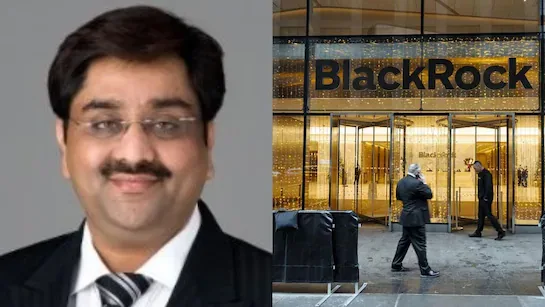In a stunning financial scandal that’s sending shockwaves through Wall Street, BlackRock’s private-credit division and major lenders are racing to recover over $500 million allegedly lost in an elaborate fraud scheme. At the center of this controversy stands Indian-origin telecom executive Bankim Brahmbhatt, accused of orchestrating one of the most sophisticated loan frauds in recent memory.
Table of Contents
BlackRock Fraud At a Glance
| Aspect | Details |
|---|---|
| Amount Involved | Over $500 million |
| Key Players | BlackRock’s HPS Investment Partners, BNP Paribas |
| Accused | Bankim Brahmbhatt (CEO of Broadband Telecom & Bridgevoice) |
| Period | September 2020 – July 2025 |
| Method | Fabricated invoices, fake customer accounts |
| Destination | Offshore accounts in India and Mauritius |
How the Scheme Unraveled
According to an exclusive Wall Street Journal report, the elaborate fraud came to light in July 2025 when an HPS employee spotted irregularities in customer email addresses used to verify invoices. What followed was a shocking discovery: the email domains were fake, mimicking legitimate telecom companies.

Brahmbhatt, who owned telecom-services firms Broadband Telecom and Bridgevoice, allegedly created an intricate web of falsified financial documents. Lenders claim he pledged fabricated accounts receivable as collateral for massive loans, building what appeared to be financially healthy companies—but only on paper.
The Timeline of Deception
BlackRock acquired HPS Investment Partners earlier this year as part of its expansion into private-credit markets. HPS had begun lending to Brahmbhatt-linked firms in September 2020, gradually increasing exposure from $385 million in 2021 to approximately $430 million by August 2024.
French banking giant BNP Paribas reportedly financed nearly half the loans to Carriox Capital and affiliated companies within Brahmbhatt’s telecom network. The bank has declined to comment on the ongoing case.
Red Flags Ignored?
Initially, Deloitte was hired to verify Carriox’s assets through random customer checks, with CBIZ later conducting annual audits. However, a subsequent investigation by law firm Quinn Emanuel and CBIZ revealed a disturbing truth: every customer email provided over the past two years was fraudulent, and some contracts dating back to 2018 were forged.
A particularly damning example involved BICS, a Belgian telecom company. In July, a BICS security staffer confirmed to Quinn Emanuel that the company had no connection to emails shared by Brahmbhatt’s firm, calling it “a confirmed fraud attempt.”

The Vanishing Act
When HPS officials confronted Brahmbhatt about the irregularities, he reportedly dismissed their concerns before going silent. An HPS employee who visited the Garden City, New York offices found them locked and abandoned. The premises remained vacant, with no staff activity observed in recent weeks.
At Brahmbhatt’s listed residence, reporters noted luxury vehicles—two BMWs, a Porsche, a Tesla, and an Audi—parked in the driveway, alongside an unopened package gathering dust. The scene painted a picture of a hasty departure.
For more insights into corporate fraud cases and financial technology developments, understanding these warning signs becomes crucial for investors and businesses alike.
What This Means for Private Credit
This case comes at a critical juncture for BlackRock and the broader private-credit industry. As alternative lending expands beyond traditional banking, this fraud highlights vulnerabilities in verification processes and due diligence protocols. The lawsuit alleges that “Brahmbhatt created an elaborate balance sheet of assets that existed only on paper” while systematically transferring funds offshore.
The scandal serves as a stark reminder that even sophisticated financial institutions with multiple layers of auditing can fall victim to determined fraudsters. As investigations continue, the industry will likely scrutinize lending practices and verification mechanisms more carefully.
FAQs
Q: How did Bankim Brahmbhatt allegedly execute the $500 million fraud?
A: Brahmbhatt allegedly fabricated invoices and accounts receivable that were used as collateral for loans. He created fake customer email addresses using domains that mimicked legitimate telecom companies, and forged contracts dating back to 2018. The funds were then allegedly transferred to offshore accounts in India and Mauritius.
Q: What companies were involved in lending to Brahmbhatt’s firms?
A: BlackRock’s HPS Investment Partners was the primary lender, starting in September 2020 and eventually lending around $430 million by August 2024. BNP Paribas, a French multinational bank, financed nearly half the amount loaned to Brahmbhatt’s companies, including Carriox Capital and its affiliates.








